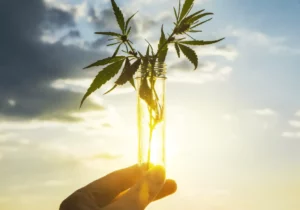2020 has changed the way we think about food. From brand-new cooks trying their hand at homemade meals, home-baked bread pictures on Facebook, to a heightened interest in the immune-boosting power of healthy foods; the COVID-19 pandemic created new habits, revealed new insights about the healthful properties of simple kitchen staples, and ushered in some of the hottest, and healthiest, food trends for 2021.
Functional Food is Wellness
For years, doctors and nutritionists have encouraged people to "eat healthy," with the usual advice to avoid such things as processed foods, sugars, and fats and of course, you need to get plenty of fruits and vegetables.
But new insights
about the powerful nutritional benefit of a wide range of foods reveal that food can be medicine, too – and that we can consciously choose to fill our diet with "functional" foods that have documented health benefits for both body and mind.
Whether that means eating more cruciferous veggies like broccoli and cauliflower for antioxidants or cooking with olive oil for omega 3 fatty acids, there’s a growing awareness of the health benefits of everyday foods
– and increasing interest in new foods with even more nutritional value.
The ongoing pandemic (when will it end?) has changed our relationship with food, and opened the door for some of 2021’s buzziest trends. As restaurants and other eating places close or limit operations, many people are now cooking at home, using healthier ingredients with a gentler impact on the environment.
The pandemic also raised awareness about the importance of boosting the immune system and fighting inflammation with foods and supplements – a key theme in today’s newest food trends.
With options ranging from taking vitamins like C and D to more exotic options such as cannabis and postbiotics, here are seven of the newest ways to eat well and stay well for the coming year – and beyond.
Postbiotics
Probiotics and prebiotics have gone mainstream in recent years – and now, postbiotics are having their turn in the spotlight. All these terms relate to the care and feeding of the gut biome. That’s the home of probiotics – beneficial bacteria and yeast that support healthy digestion.
Prebiotics are substances that feed the body’s colonies of probiotics, and you can get them in supplements or natural sources such as oats, bananas and garlic. It’s also possible to add more of these friendly bacteria from supplement and food sources such as yogurt.
Now, scientific interest is turning to postbiotics – the metabolites, or waste, produced by the gut’s probiotics as they break down food. Research reveals that these substances can have significant health benefits of their own. Postbiotics contain various enzymes and proteins that appear to play a role in reducing inflammation and improving healthy gut functioning.
There aren’t many postbiotic supplements on the market, but natural food advocates expect to see more, and soon. In the meantime, many natural supplements, such as apple cider vinegar, spirulina, and fermented aloe, can help boost the production of postbiotics in the gut.
Dr. Marvin S. Hausman, leading researcher on the gut microbiome and autism, says, "I believe the microbiome is a misunderstood system and plays a very important role in inflammation and chronic disease development."
Below Dr. Hausman lists four things you can do to maintain and improve a healthy gut microbiome:
- Take probiotics daily. We have 100 trillion bacterial cells in our body, compared to 30 trillion human cells, so we are controlled by the bacteria in our body. While there is no official recommendation on the minimum dosage, many are now recommending people take up to 50 billion probiotics per capsule.
- Take prebiotics daily – they are a source of food for the healthy bacteria in our body.
- Ensure your diet is high in fiber – eating foods high in fiber, such as mushrooms, will benefit your microbiome and improve your gut health because they allow healthy bacteria to thrive.
- Reduce stress. The bacteria in your body respond to stress and release inflammatory cytokines that can lead to chronic disease development; Examples: irritable bowel syndrome, Crohn’s disease, colitis, etc.
Microgreens
Regular "greens," such as broccoli and carrots, have well-known nutritional benefits, but their tiny, young shoots may be up to 40 percent more nutritious than the mature versions.
Microgreens such as arugula and spinach were once used mainly as garnishes in restaurant dishes, but as awareness grows about their health benefits, they’re also coming to a grocery store near you.
Microgreen enthusiasts also note that these baby veggies are easily home-grown, even in small spaces. They can be harvested in just one to three weeks, leaving room to start a new crop right away.
Kelp- the New Kale
Kale was the health food darling, loved for its versatility and many nutrients including essential Vitamin K, folate, and other vitamins. But now, kale has a nutrient-rich rival from the sea.
Kelp, a form of seaweed, is the new kelp. It’s mega-packed with vitamins, minerals, and trace elements absorbed from the marine environment.
Kelp is also one of nature’s best sources of iodine, an essential nutrient for thyroid health. It’s so rich in iodine that health experts warn against eating too much because it could damage the thyroid.
Kelp has long been a staple of Asian diets, but it’s becoming more widely available worldwide. Enjoy dried, seasoned kelp for a crunchy snack, or add fresh kelp to soups, noodles, and many other dishes.
Eating For the Environment
Along with overall healthier food choices, more people now consider the environmental impact of their food. "Green" eating is a part of a larger movement toward sustainability that impacts buying decisions for everything from cars to clothing.
The trend toward enviro-friendly eating includes more plant-based options for everything from tuna to burgers. It also includes an increased interest in buying locally-produced fruits, vegetables, and other foods in season. This is in lieu of imported products that leave a large carbon footprint.
These trends also go hand in hand with the rising interest in local and home gardens and the consumer demand for tasty, healthy alternatives to high-fat meats and dairy products.
Natural Immune Support
COVID-19 boosted growing interest in the benefits of supporting the immune system, and that interest in natural immunity boosters is likely to continue in 2021 and beyond.
Recent research shows that taking your vitamins, especially C and D, can improve your resistance to a long list of diseases, including current trending viruses. Other immune boosters include an array of minerals, herbs, and spices such as zinc, echinacea, elderberry, and astralagus.
Although many of these natural supplements have been available for years, they’re now combined in novel ways to appeal to new consumers. Vitamin-infused waters and juice drinks offer convenient and tasty ways to get a variety of nutrients at once.
Multiple vitamins and minerals are now paired with natural substances like cannabis, fruits and vegetables into gummies, lozenges or flavored powders. And turmeric, the trendiest of immune boosters, now appears in cereals, health drinks, and protein bars, along with ginger, black pepper, and other immune-boosting kitchen staples.
Cannabis
Cannabis is legal in some form in most US states, and industry watchers expect even more movement toward legalization in 2021 and beyond. Research continues to reveal more health benefits derived from consuming cannabis and its numerous compounds, including its cannabinoids and terpenes. As the numbers of people using cannabis increases it’s become evident that they’re looking for new ways to incorporate it into their lives-whether it be an edible, tincture, gel cap or more.
The well-known cannabinoid compound cannabidiol, or CBD, has become a favorite additive to everything from gummies to CBD water – and new uses for this soothing, non-intoxicating compound are being discovered every day. Cannabis advocates expect FDA approval for CBD as a safe additive to foods of all kinds in the near future.
CBD and its psychoactive cousin THC are the best-known cannabis compounds in the world. But the cannabis plant contains more than a hundred others, and now they’re having a turn in the spotlight too. "Secondary" cannabinoids such as cannabigerol (CBG), cannabinol (CBN) and tetrahydrocannabinolic acid (THCA) are growing in popularity as researchers discover more of their health benefits.
Cannabis is also rich in terpenes, resins which give different strains their flavor and smell – and these substances also have their own health benefits. Expect to see more terpene isolates such as limonene and beta-caryophyllene available as isolates that can be added to a variety of foods and topical products.
Chickpeas – the New Cauliflower
In recent years, cauliflower has been the go-to vegetable for advocates of the keto diet and anyone looking for alternatives to carbohydrate-rich foods like rice, potatoes, and bread.
But now, the humble chickpea is overtaking cauliflower as the vegetable of choice for a variety of low-carb recipes.
Many people know chickpeas (also called garbanzo beans) from popular dishes such as falafel and hummus. But chickpeas can be mashed, chopped, and roasted as a meat substitute, and chickpea flour is also available for low-carb baking.
These high fiber beans also contain considerable amounts of iron, folate, and trace minerals such as copper and manganese. They have nearly all the essential amino acids except for methionine. Eating chickpeas regularly can also help to control blood sugar and promote insulin regulation.
The pandemic year of 2020 accelerated some popular health trends and gave rise to entirely new ones. The hottest health trends of 2021 offer easy natural ways to stay well for the new year –and for a lifetime.






